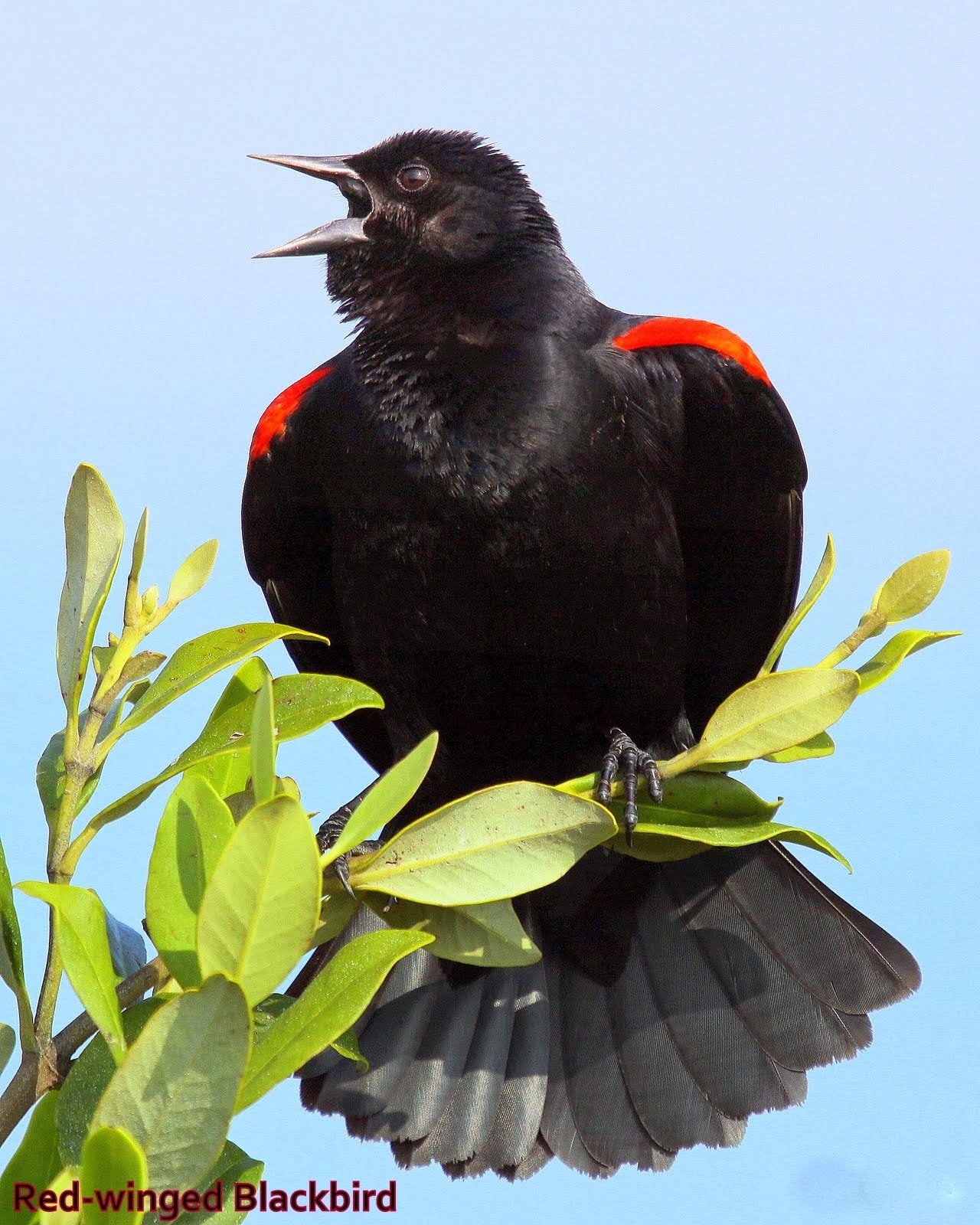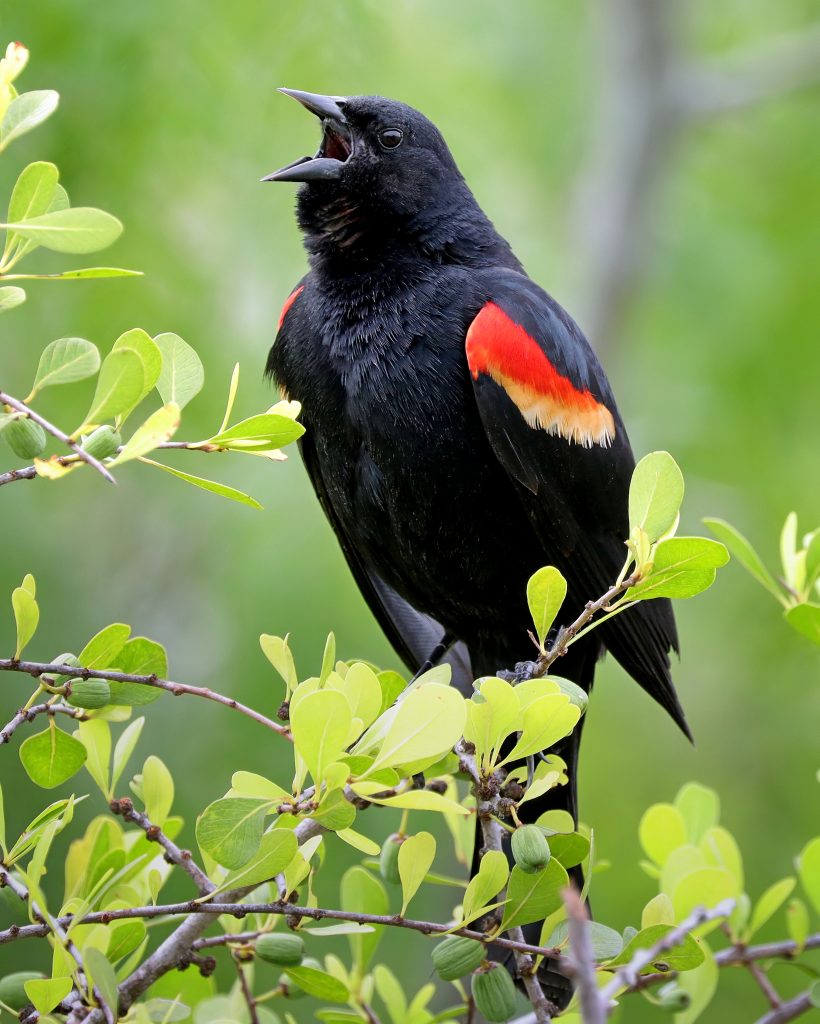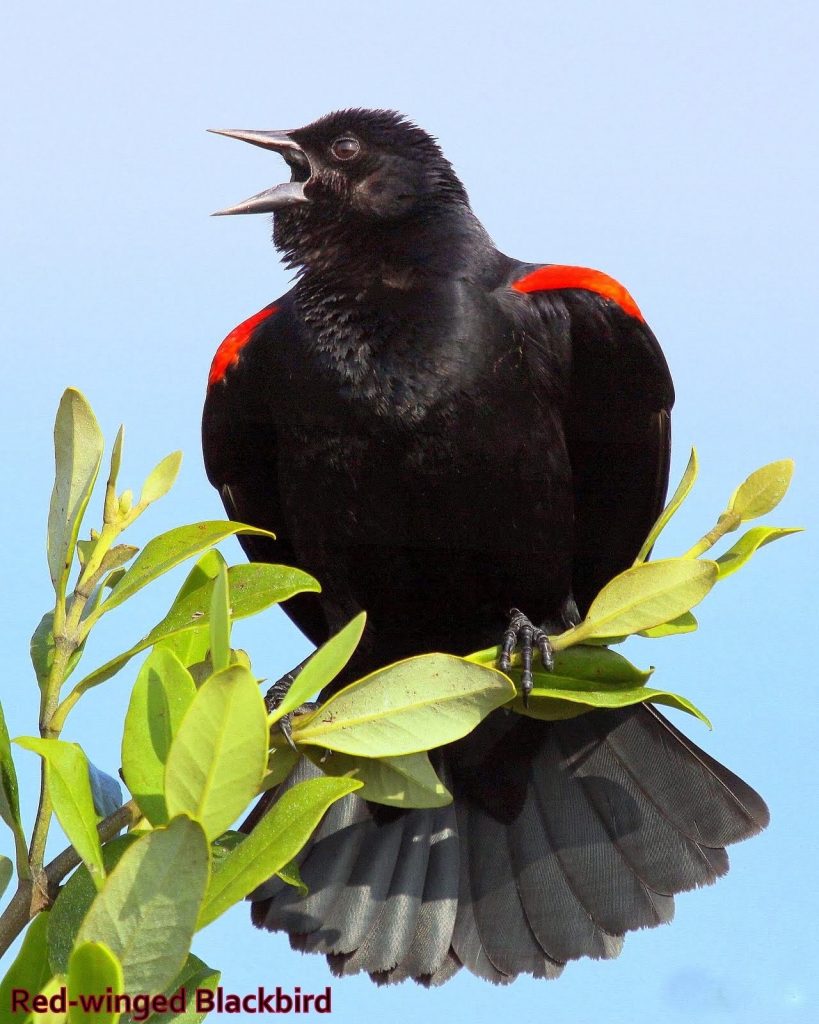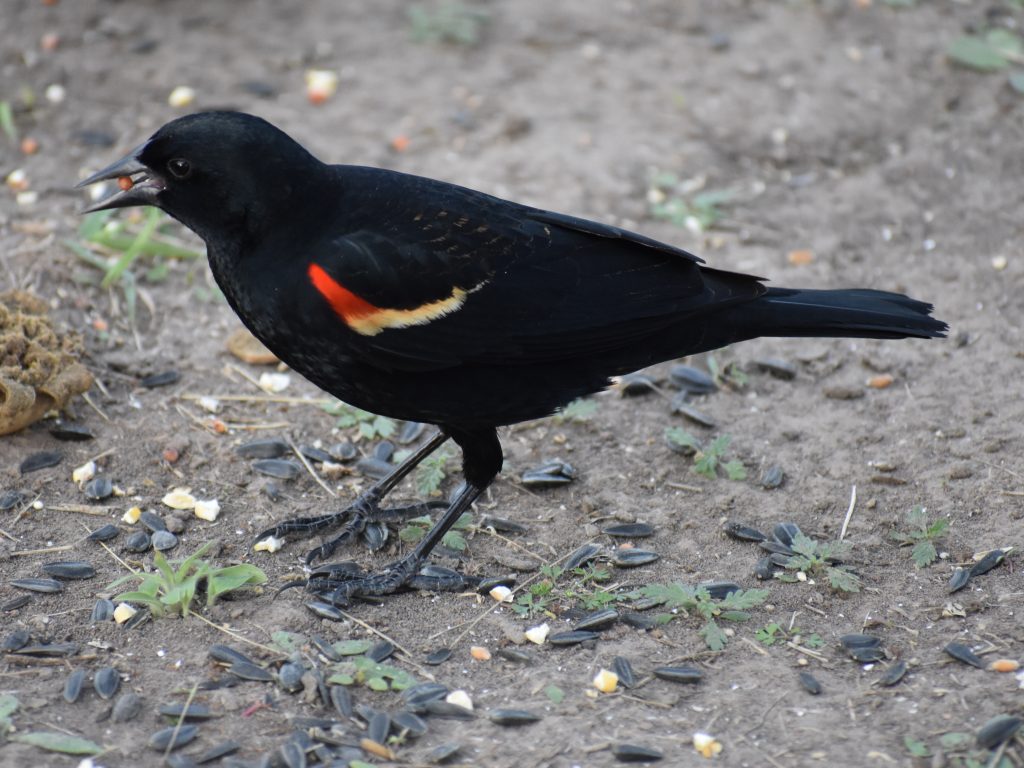by M. Kathy Raines

Conk-la-ree! Conk-la-ree!
Conk-la-ree! Conk-la-ree! The shrill, liquid burbling of migrating male red-wings—scarlet epaulets aflame—fills the air from mid-March to early May, ushering in the many delights of late springtime in the Rio Grande Valley.

“Your backyard is so noisy!” laughed my neighbor. Yes, it was. Wave after successive wave of red-wings not only gobbled up birdseed—muscling out all but the hefty doves—but for over a month, their shrill gurgling engulfed the sound space, with even grackle shrieks and kiskadee whines relegated to background music.
Then suddenly the air was void of red-wing songs. By early May, most males had departed, save for a few straggling juveniles, with their duller, mottled colors. Males first arrive on northern breeding grounds to select and defend turf. The more subtly colored females, which resemble large sparrows, stop here to rest and refuel a week or two later.
Not all red-winged blackbirds migrate; many breed in the Valley. But, unlike in wetter regions, where they nest in fields and meadows as well as salt and freshwater marshes, our blackbirds confine themselves exclusively to wetlands. Year-round, as dependably as seagulls squawking on the shore, red-wings’ cries pierce the air along Laguna Madre’s mudflats and mangrove forests. They breed throughout much of Canada, Mexico and most of the continental United States. Migrants winter in southern states or southwards into Central America.
The glossy male red-winged blackbird (Agelaius phoeniceus) wears a slim, yellow lining beneath his showy crimson, while the female, with her brownish-streaked feathers, can conceal herself in vegetation when nesting. “Agelaius” means “gregarious” in ancient Greek, while “phoeniceus” is Latin for “crimson”. The blackbird’s Spanish name, “sargento alirrojo”, or “sergeant redwing” may allude to its patches that resemble an officer’s epaulets. Some call the blackbirds “knights of the prairie”, perhaps for their ardent defense and strident alerts of impending danger.

Omnivorous birds, they eat primarily insects and other invertebrates during breeding season. A red-wing frequently gapes, or forcefully opens its lower mandible against an object, thus exposing insects attached to aquatic plants and under stones and sticks. It also catches insects midair or gleans them from leaves.
To encourage a prospective mate—one of several—a male may crouch and sing, fly and cling to a cattail. Given encouragement, he descends through vegetation, bowing, bill between his feet, and rips off leaf fragments, manipulating them as the female might when evaluating nest material. She may follow him, observing as he repeats the ritual. While she builds a nest, he may plop into it, plucking materials and pantomiming the process of shaping, though he does no genuine building. A possessive male may drive a straying female home, bumping, biting and seizing rump feathers.
Females typically secure grassy, open-cup nests to cattails and other marsh plants. Females and males, their cherry patches aglow, thwart intruders, including humans, whom they may shrill at or even strike—sometimes smacking a camera. In ten to twelve days, downy hatchlings with sealed eyes emerge from blue-tinted eggs.
Red-winged blackbirds employ nuanced calls during courtship, flight, feeding, maintaining contact, begging and displaying—the most notable being the song the male belts as he—perched high, head thrust forth, tail spread and feathers fluffed—opens his wings to show off scarlet epaulets. Distress calls apparently correspond to specific perils, with the thinnest for menacing hawks.

Red-winged blackbirds, strong fliers, also walk, hop and sidle along branches. During confrontations, males engage in the sky-pointing typical of blackbirds. Combative birds grab each other’s feathers, peck and grapple, sometimes with feet interlocking, aerially or on the ground.
Though abundant, red-winged blackbirds, according to Cornell’s website, Birds of the World , have declined 36% from 1970 to 2014. Inevitably, some are poisoned by fertilizers, pesticides and herbicides. Also, since the blackbirds open corn husks and unearth rice sprouts, a 1918 amendment to the Federal Migratory Bird Treaty Act allows for their destruction. Additionally, though blackbirds strive to fight them off, brown-headed cowbirds heavily parasitize their nests.
Restoring wetlands and other habitats to protect threatened species also helps breeding red-winged blackbirds. I so cherish red-winged blackbirds’ boisterous call springtime calls. Long may they thrive!



Leave a Reply